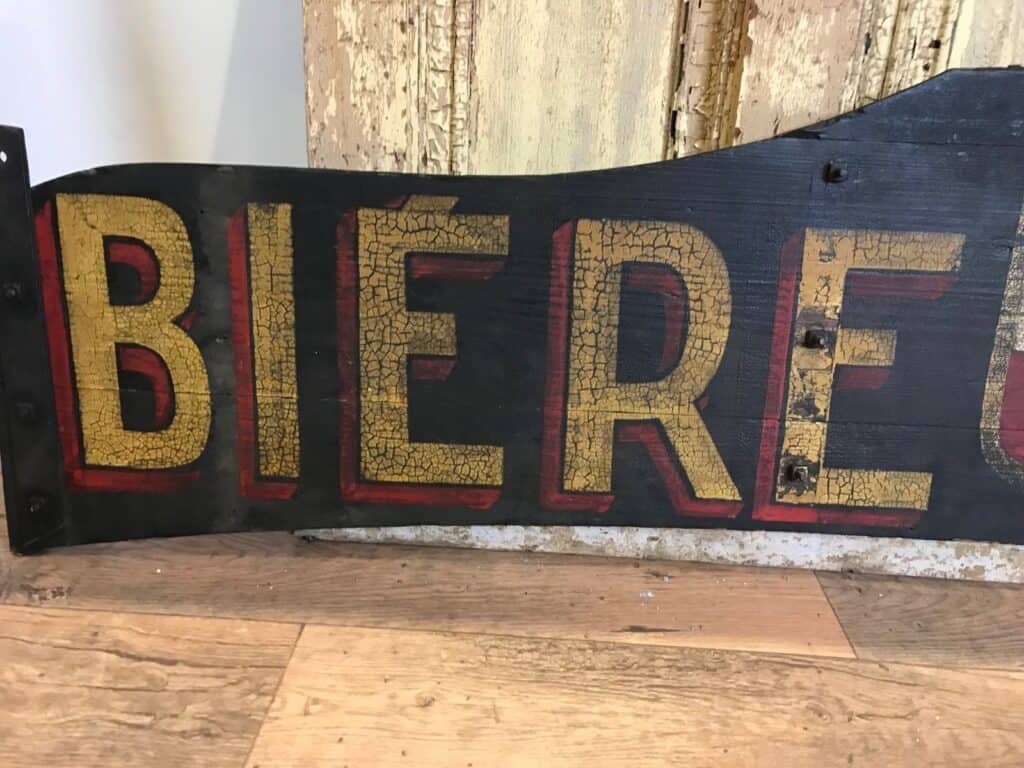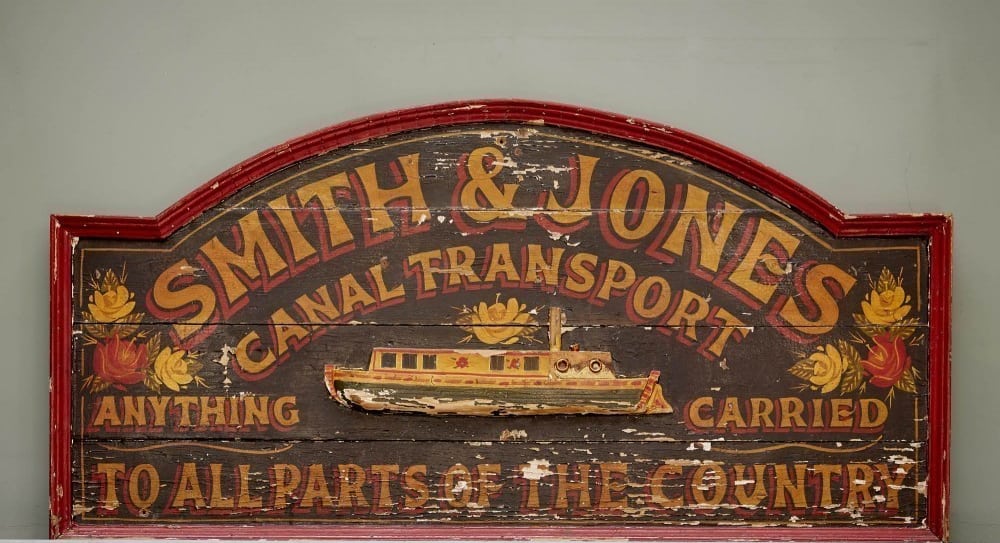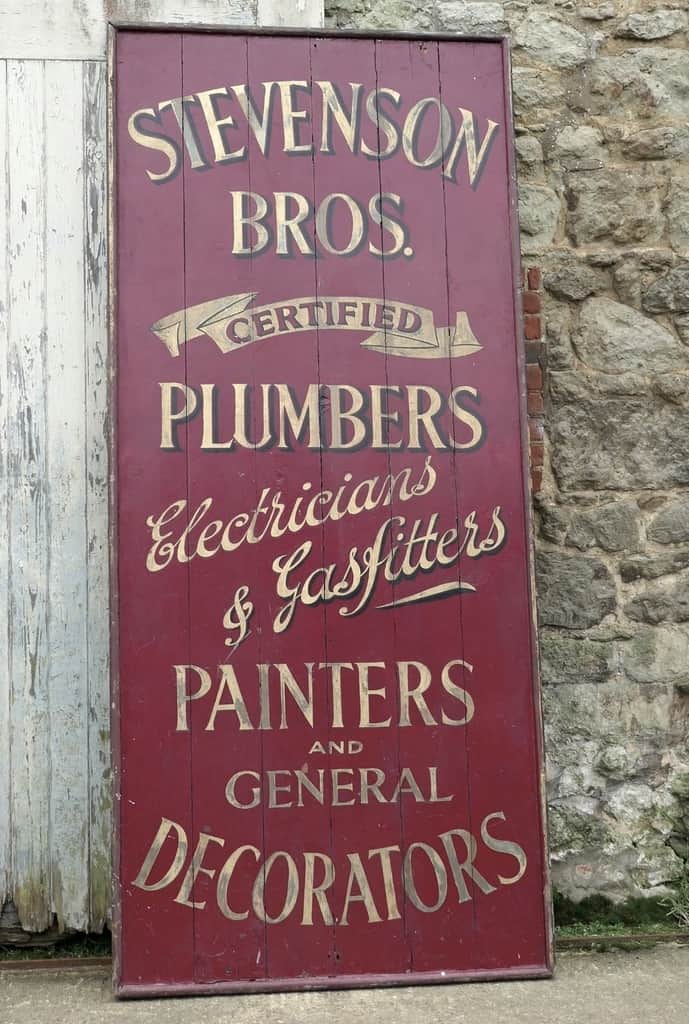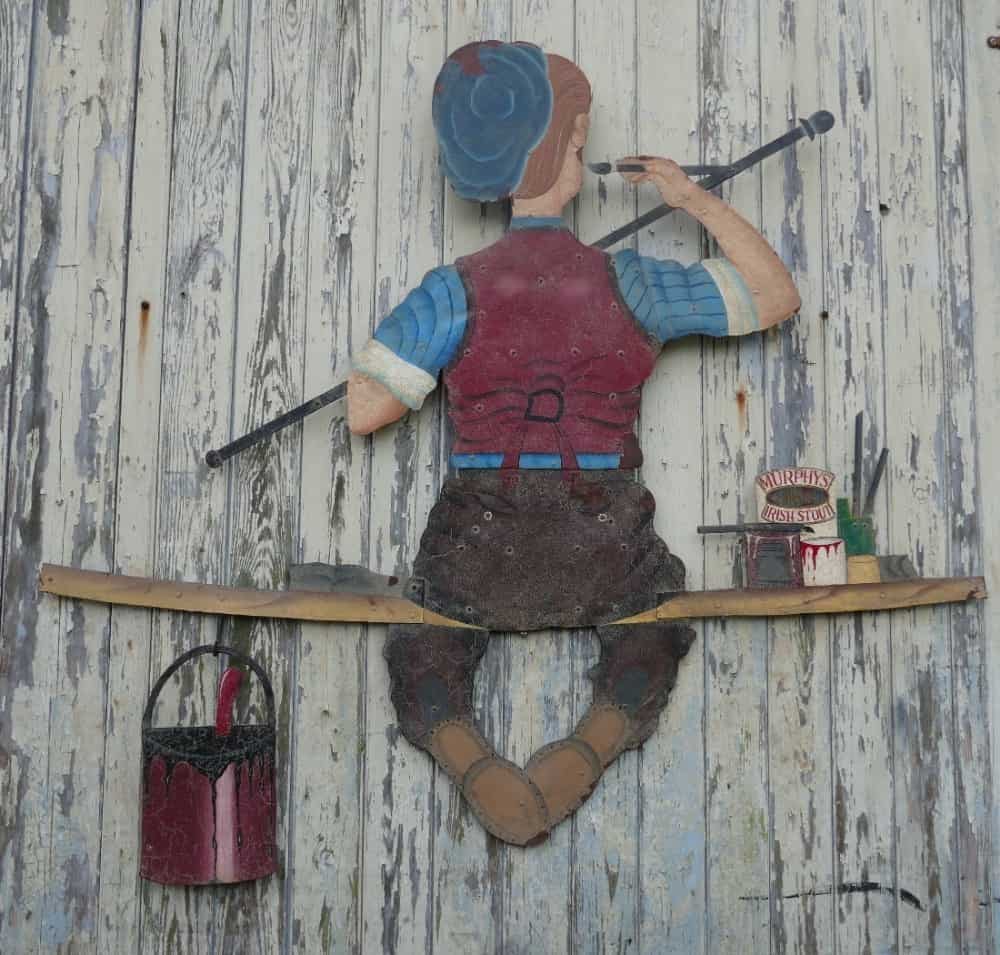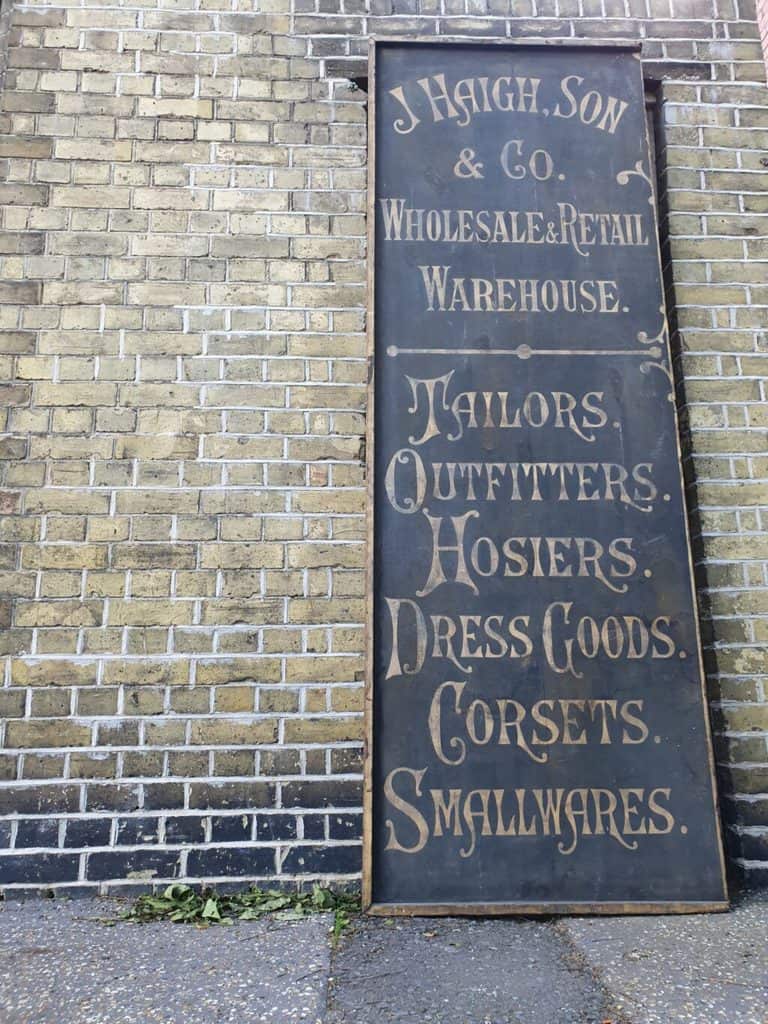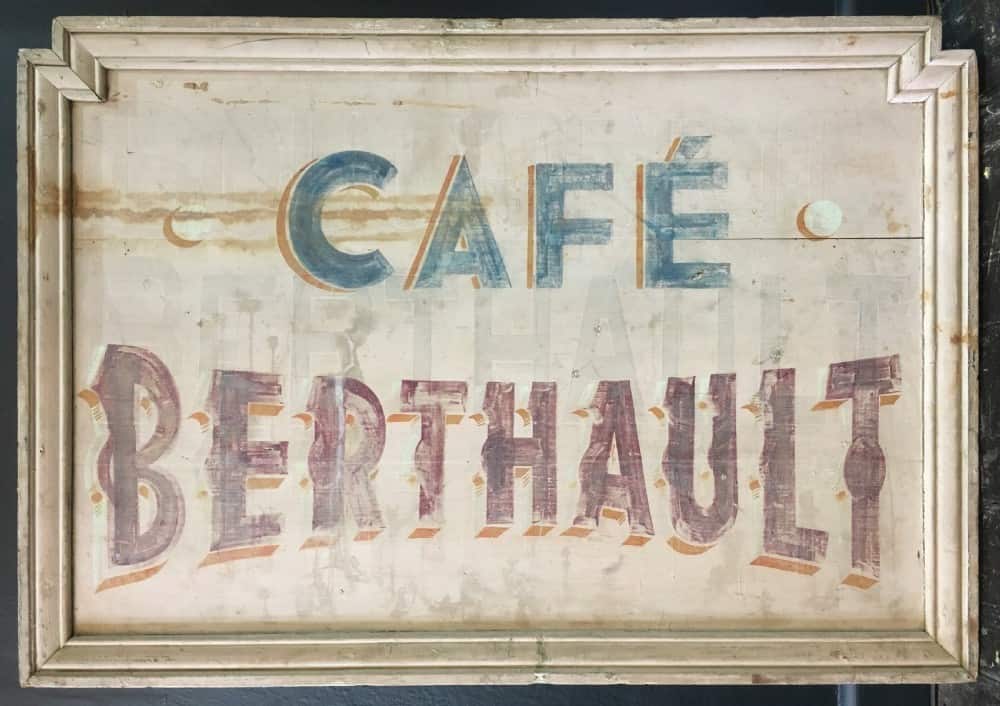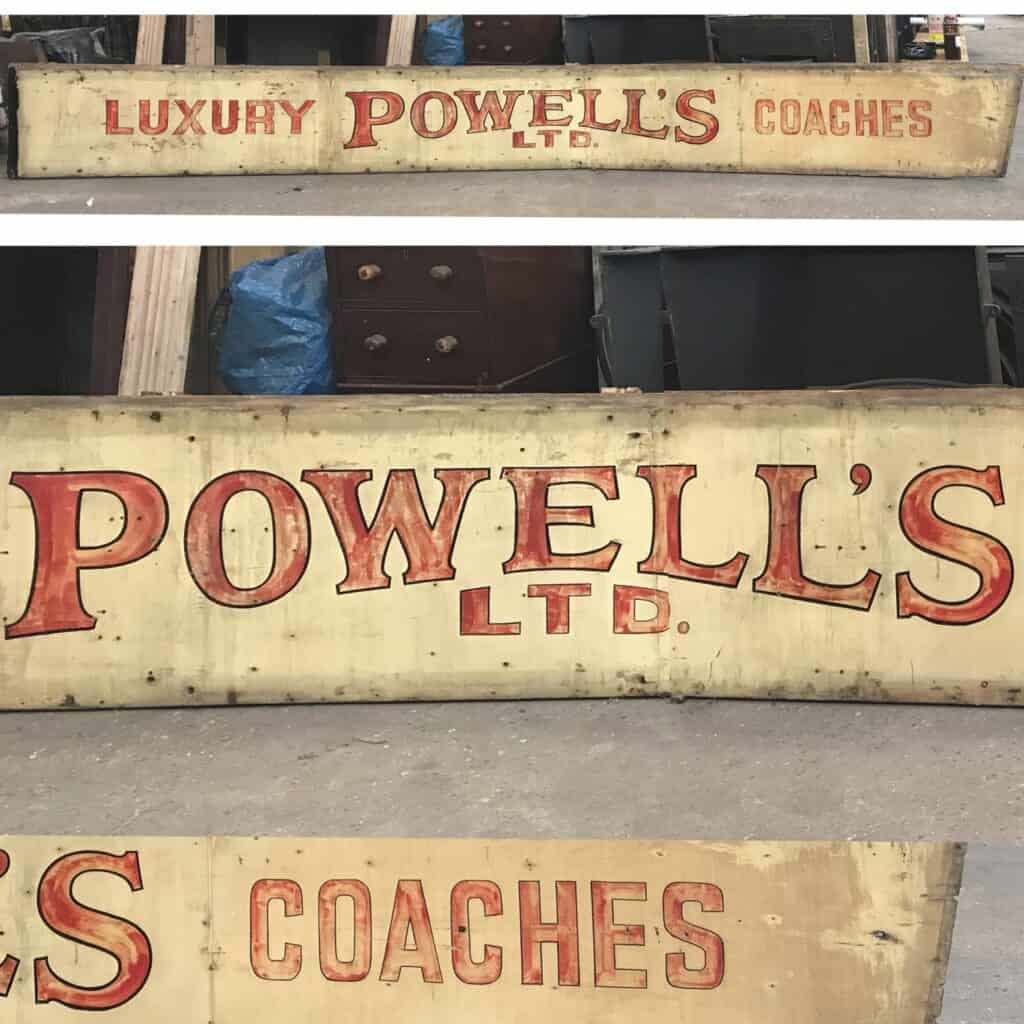5 Oct 2020
Ghost Signs for Sale Raise Ethical Questions
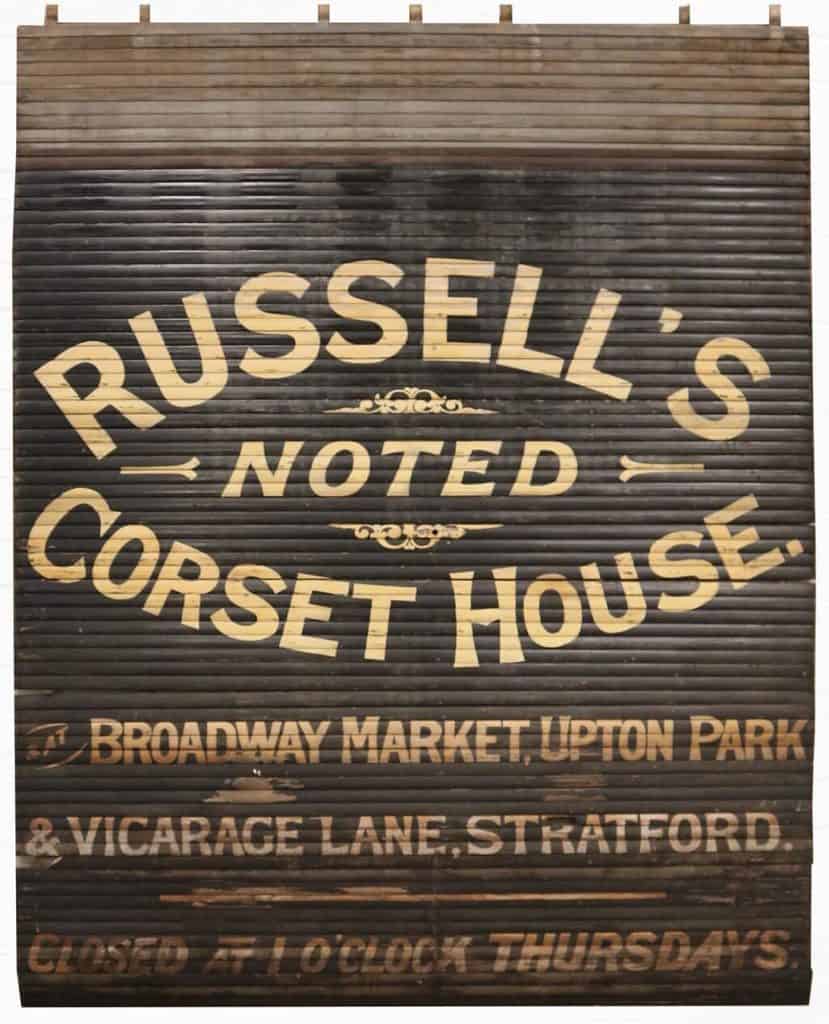
I’ve recently enjoyed browsing the ‘vintage signs’ pages of the Vinterior website which is an online marketplace for antiques dealers. It came to my attention some time ago when the sign below was for sale, alongside another that would once have been on the shop next door. They have long since been sold but, at the time of writing, those in the gallery above are all available at prices ranging from £250 to £3,480, which got me thinking about this marketplace in broader terms.

Signs in the Wild or Captivity
The pieces are being sold as interior decoration and there is obvious appeal to having a piece of vintage, fading signage adorning part of your home. What’s more, in theory, the existence of such a market prevents these signs from being destroyed or discarded upon removal. However, there is some further nuance in the matter.
One of the obvious possibilities is that signs may be removed either without permission (e.g. this one in North London), or solely for the purpose of being sold, especially given the prices that some of them appear to command.
This potentially lucrative trade may prevent altermative options from getting a look in, notably having them left in situ where their original context is maintained. A good example of this happening is the sign for E. Mono in Kentish Town. The one below in Southwark is among others that have been purposely kept in place within the context of wider property development on their host buildings.
Perhaps to these enlightened developers, the value added to their property by the authentic sign is believed to be greater than its sale value if removed.

Vital Statistics
If for some reason it was necessary for the sign to be removed then storage/display in a suitable museum would be an option for the most noteworthy, but not practical for the category en masse. However, aspects of the process could be followed, regardless of the signs’ ultimate destinations. These would include, but not be limited to:
- Photographically documenting them in their original position, including close-up images;
- Clearly noting address details;
- Conducting local historical research into dates of operation, and any other useful or interesting information about the companies and their owners.
This information would certaintly add value to the salvaged/removed signs in the context of the market for them, in much the same way as ‘certificates of authenticity’ do for artworks and limited edition prints.
However, it seems that those dealing in them are not typically seeking out and/or supplying such details. My enquiries about the eight signs at the top of this post yielded five responses, none of which could verify the provinence of the items for sale.
Beware the Faux
It’s one thing being unable to confirm the history of a genuine sign, but quite another if this is becuase the sign is actually a modern painted fake, or ‘faux’ sign.. While I don’t doubt that those above are the real deal, and the good intentions of their vendors, there is clearly scope for malicious interests to enter into what is often a market of relatively high-ticket items.
The incentives to (re)create objects which appear authentic are there, as are the techniques to do so. Specialists such as Peter Vogel of Nutmegger Workshop could certainly turn their hand to this endeavour should they so choose. The picture below is one of his, and is in fact based on an original sign that can be seen in archival photos, although he is clear that this is his own, modern creation.
There is the capacity for the marketplace to be confused by fakes, without greater care taken over authentication as outlined above.
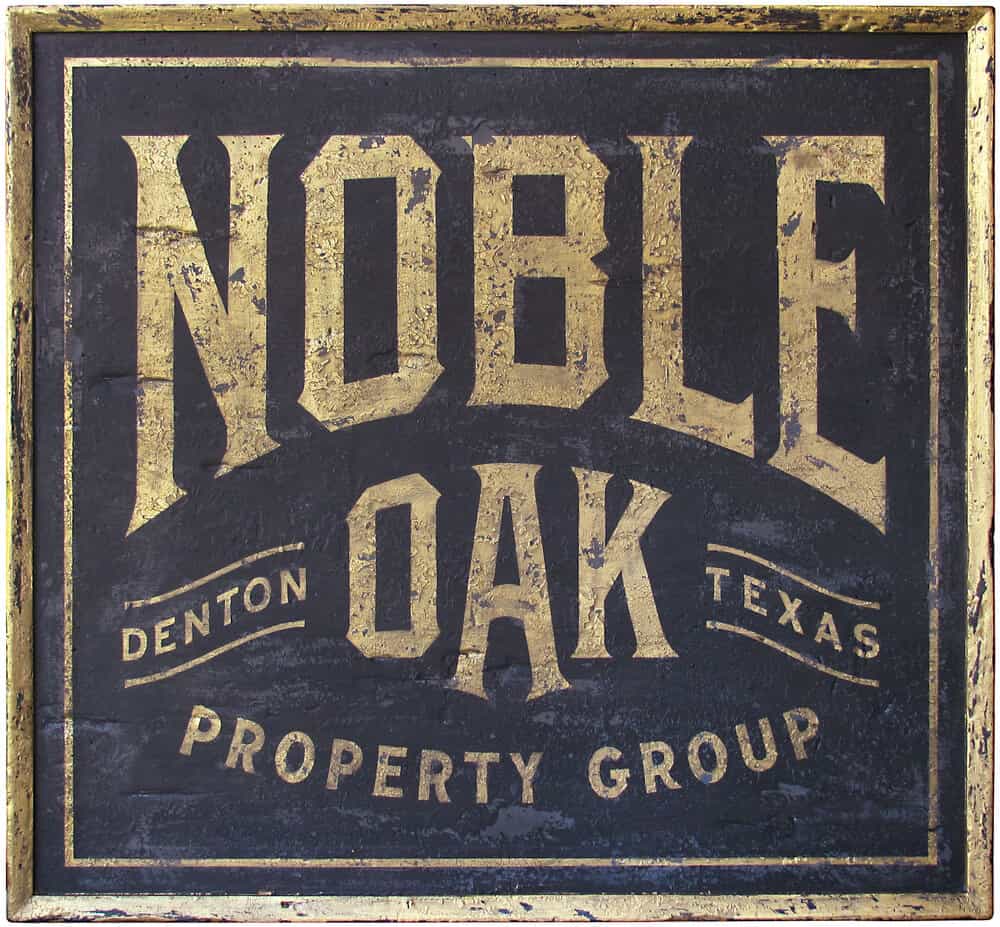
In Summary
Like endangered species, the fate of these signs in the face of property development may ultimately depend on finding a balance between maintaining a population in the wild, while carefully capturing and caring for some in captivity.
Given the prices that they command, and the ability to create very good ‘faux’ artefacts, a ‘third way’ could be making replicas of original signs for the purposes of interior decoration, while leaving the originals in place. The viability of this would depend on the extent to which the value on marketplaces such as Vinterior is bound up with the signs’ authenticity. However, as things stand, this authenticity isn’t rigorously verified by sellers or buyers, leaving issues somewhat blurred to say the least.
PS. A Confession
While writing my book about painted signs in Kratie, Cambodia, I grew an attachment to quite a number of them. A set of five were purchased directly from the owners, and removed, initially to my home there and then brought back with me when I left.
While I was clearly very happy with them at the time, on reflection I wonder if it was for the best, especially given how at least one of them was replaced. That said, there’s no telling if this replacement would have happened eventually anyway, and therefore what the fate of the painted original might otherwise have been.
More Signs for Sale at Vinterior
